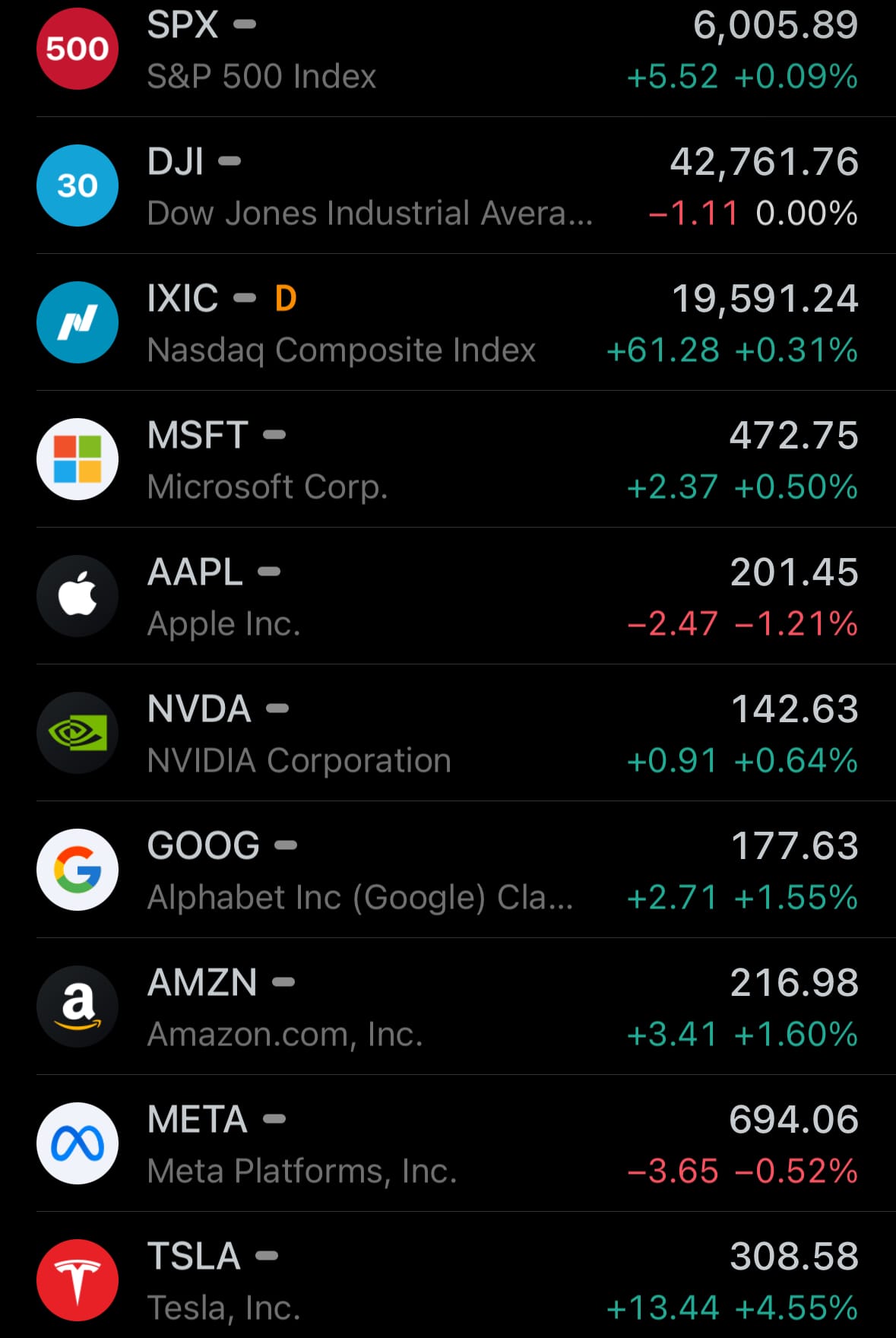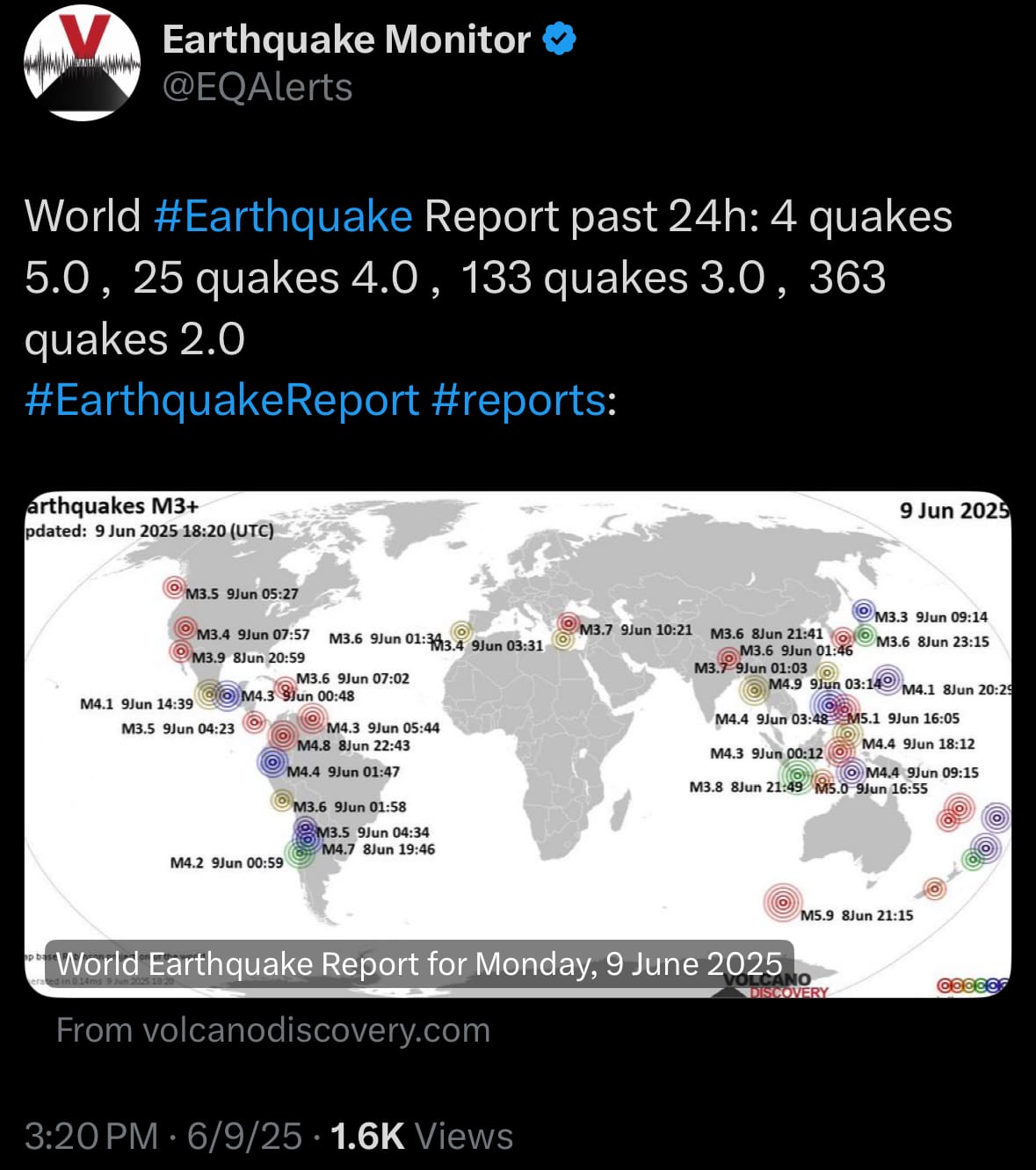Tuesday☕️

Economics & Markets:
- Yesterday’s U.S. stock market:

- Yesterday’s commodity market:

- Yesterday’s crypto market:

Geopolitics & Military Activity:
- Yesterday, June 9, 2025, Russia conducted a large-scale drone and missile attack across Ukraine, with Kyiv facing multiple strikes. The assault involved hundreds of drones and missiles targeting various regions, damaging residential buildings, medical facilities, and infrastructure in the capital. Fires erupted in several Kyiv districts, and power outages impacted thousands.

- Ukrainian air defenses intercepted some projectiles, but the volume of the attack challenged response efforts. The strikes came after recent Ukrainian drone operations against Russian military targets, which Russia cited as a reason for the assault.
Environment & Weather:
- Yesterday, June 9, 2025, Bucharest, Romania, faced severe flooding due to torrential rains that prompted an orange-level weather emergency. The heavy rainfall inundated streets, turning them into rivers, disrupting public transportation, and causing power outages across the city. Areas like Berceni and key locations such as Mall Plaza were significantly affected, with evacuations reported and flights diverted due to unsafe conditions. Emergency services are actively responding to manage the crisis and limit further disruption.

- This flooding is part of a broader pattern of extreme weather in Romania, with Bucharest and 16 other counties previously hit by heavy rains and strong winds from May 28-30, 2025. While no homes in Bucharest were reported as flooded during that earlier event, the recent deluge has overwhelmed urban infrastructure. Authorities continue to monitor the situation closely, with efforts focused on restoring normalcy amid ongoing weather alerts.

Science & Technology:
- Anthropic has launched Claude Gov, a suite of AI models designed specifically for U.S. national security customers, such as defense and intelligence agencies. Developed with input from government partners, Claude Gov is built to process classified data and support tasks like intelligence analysis, strategic planning, threat assessment, and cybersecurity. The models are deployed in secure, classified environments and have been rigorously tested for safety, adhering to Anthropic’s commitment to responsible AI. Access is restricted to authorized government personnel, ensuring compliance with strict security protocols.
- Claude Gov positions Anthropic in the growing government AI market, competing with solutions like OpenAI’s ChatGPT Gov. Through partnerships with Palantir Technologies and Amazon Web Services, Anthropic integrates its models into secure government systems to meet operational needs. This launch highlights the increasing role of AI in national security and Anthropic’s focus on secure, mission-driven applications.
Statistic:
- Largest public automakers by market capitalization:
- 🇺🇸 Tesla: $993.92B
- 🇯🇵 Toyota: $240.72B
- 🇨🇳 Xiaomi: $178.84B
- 🇨🇳 BYD: $109.48B
- 🇮🇹 Ferrari: $86.67B
- 🇩🇪 Mercedes-Benz: $56.58B
- 🇩🇪 BMW: $54.31B
- 🇩🇪 Volkswagen: $52.81B
- 🇮🇳 Maruti Suzuki India: $46.41B
- 🇺🇸 General Motors: $46.08B
- 🇮🇳 Mahindra & Mahindra: $43.53B
- 🇩🇪 Porsche: $42.78B
- 🇺🇸 Ford: $40.79B
- 🇯🇵 Honda: $40.52B
- 🇰🇷 Hyundai: $36.00B
- 🇨🇳 Li Auto: $30.99B
- 🇮🇳 Tata Motors: $30.87B
- 🇨🇳 Seres Group: $30.50B
- 🇳🇱 Stellantis: $28.77B
- 🇰🇷 Kia: $27.76B
- 🇨🇳 SAIC Motor: $25.34B
- 🇨🇳 Great Wall Motors: $23.04B
- 🇯🇵 Suzuki Motor: $22.80B
- 🇨🇳 Geely: $22.35B
- 🇨🇳 XPeng: $18.87B
History:
- The history of riot control began in ancient times, though methods were rudimentary and often brutal. Early civilizations, like the Romans, used military formations such as the testudo to manage crowds or quell uprisings, relying on physical force, shields, and weapons. In medieval Europe, authorities employed armed militias or knights to suppress peasant revolts, with little regard for proportionality. By the 19th century, as urbanization and industrialization led to larger, more frequent protests, governments started formalizing crowd control. The creation of modern police forces, like the London Metropolitan Police in 1829, marked a shift toward organized, non-military responses. Tactics included batons, cavalry charges, and early forms of water cannons, though lethal force remained common, as seen in events like the Peterloo Massacre of 1819.
- The 20th century saw significant advancements in riot control, driven by social unrest and technological innovation. Non-lethal tools like tear gas, first used during World War I, were adapted for civilian crowd control by the 1920s, with the U.S. and Europe deploying it against labor strikes and protests. The civil rights movements of the 1960s and anti-war demonstrations prompted further development of less-lethal methods, including rubber bullets, beanbag rounds, and improved water cannons. Training and tactics also evolved, with police adopting de-escalation strategies and formations like cordons or kettling. By the late 20th and early 21st centuries, riot control incorporated advanced technology, such as pepper spray, tasers, and sound-based devices like LRADs, reflecting a balance between maintaining public order and minimizing harm, though controversies over excessive force persist.
Image of the day:

Thanks for reading!
Earth is complicated, we make it simple.
Click image to view the Earth Intelligence System:



Support/Suggestions Email:
earthintelligence@earthintel.news




